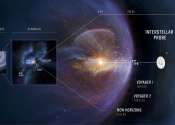The 'devil comet' 12P/Pons-Brooks has finally become visible from Australia. What can we expect?
If you're a fan of all things space, you've doubtless heard about the "devil comet," which has been captivating keen-eyed observers in the northern hemisphere for the past few weeks. Now it's our turn, as comet 12P/Pons–Brooks ...









